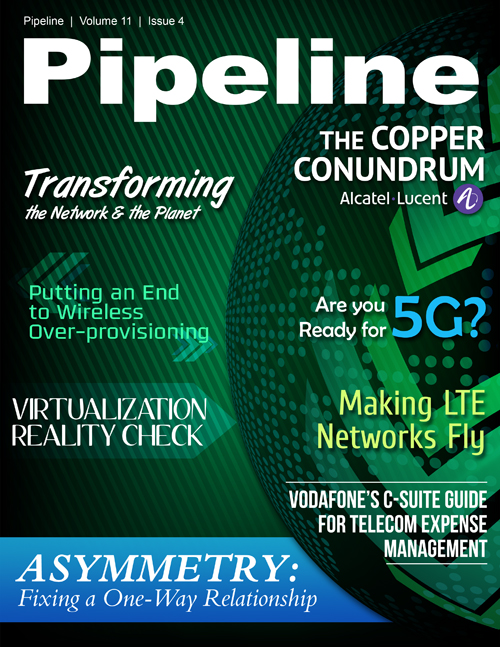Virtualization Reality Check
By: Nancee Ruzicka

Virtualization – instantiating physical devices in software - is the topic of discussion as service providers transform their businesses from capacity and cables to digital services and connected applications. By establishing cloud platforms and enlisting partners, service providers worldwide are building profitable businesses that deliver managed services and operations, machine-to-machine (M2M) platforms, and connected applications.
In addition to data center virtualization of IT elements, network function virtualization (NFV) is seen by enterprise IT and service providers alike as a solution for the challenges associated with the increasing volume and complexity of network connectivity solutions. Rather than continually adding network appliances and absorbing the cost of energy, capital, and unique skills required to design, configure, and operate these devices; service providers are considering software-based alternatives. Constantly deploying additional network appliances is no longer sustainable and NFV offers the option of consolidating that vast number of physical appliances to a set of virtual software appliances that run on standard high volume servers and Ethernet switches.
As with every new technology hype cycle, it is important to look beyond the marketing literature and slide decks to understand the real benefits and challenges of this next iteration of network evolution. Make no mistake, virtualization is happening and will continue to impact network and service operations going forward, but the reality is that service providers have invested billions in network and operations infrastructure that will not be abruptly shut down to implement virtualization. To that end, there are some important considerations.
About Ericsson
Ericsson provides industry-leading OSS/BSS solutions and professional services, based on the deepest and broadest experience in the business. With the agility to help you realize your tomorrow today, our solutions and services are helping operators around the world succeed in the Networked Society. This means being fast, flexible and in control, delivering great experiences to consumers, operating efficiently and developing innovative new offerings for a diversifying market. In a world where mobile, broadband and the cloud are fueling a fundamental transformation, managing the subscriber lifecycle and experience will become even more important and challenging. Look to Ericsson to support your modernization and integration efforts across the full OSS/BSS landscape. www.ericsson.com/ossbss
Architecture
Network hardware will never be entirely replaced by software. Arguably, hardware-based network elements have shorter productive lives and continuous replacement and integration is not a cost-effective approach to delivering service innovation. However, those elements are already in-place and working well within existing network architectures and operating processes. There is a significant risk associated with wholesale replacement of physical elements with virtual network elements. Architectures, processes, performance, and reliability are all affected and service providers will not proceed without careful consideration and planning.
NFV proposes to replace any large complex set of incompatible network appliances with standardized software versions that are easier and less expensive to configure, upgrade, and operate. Yet, for many years, vendors have had the ability to develop and deploy network functionality in software.
It’s no secret that software costs less. Software does not present any manufacturing or component issues, there are no mechanical assemblies that are vulnerable to environmental conditions, design and build costs are reduced, and software can be readily modified whereas hardware is fixed. Whether upgrading existing network architectures or designing new features and functionality, there is always a discussion of what could be done using software versus what should be implemented in hardware.
Still, engineers regularly decide to implement specific network functionality in hardware. However, there are numerous network appliances that are little more than a processor and a software application. Signaling, policy, and charging elements readily lend themselves to virtualization on common platforms, as do subscriber management and other edge functions. The volume of appliances appearing at the edge of the network emphasizes the efficiency and cost-effectiveness of virtualization; but as you get closer to the core network infrastructure, network elements become more complex and the benefits of virtualization become less clear.




















